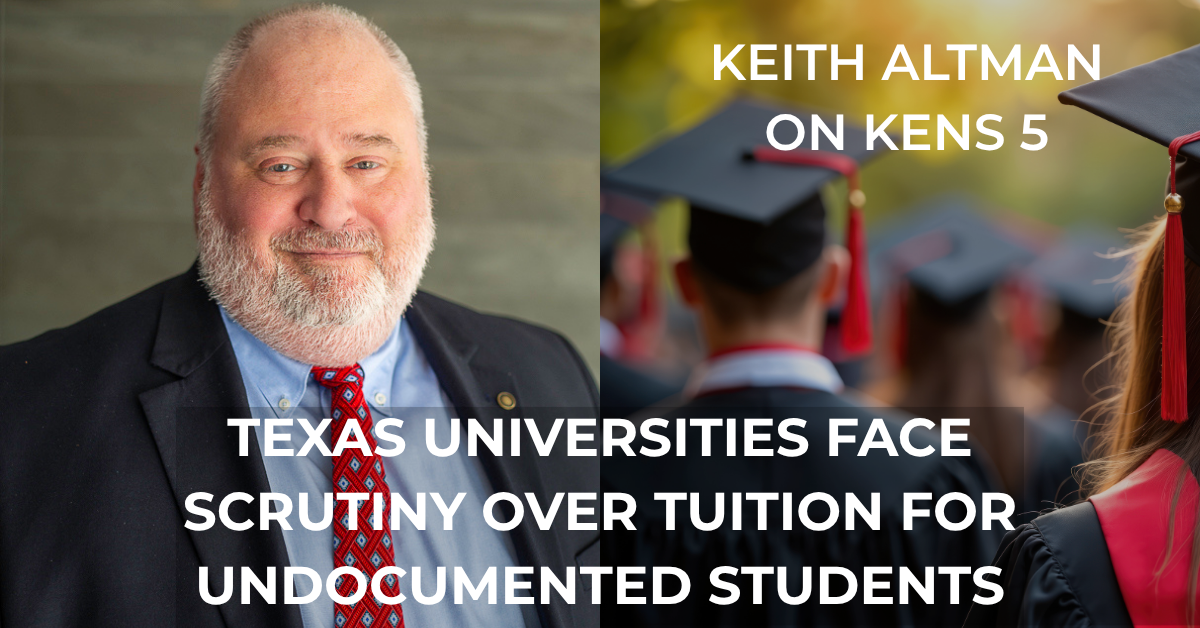An Individualized Education Plan (IEP) is a specialized allowance offered under the Individuals with Disabilities Education Act (IDEA) to support children with disabilities in their learning journey. It encompasses specific objectives, provisions, and supplementary aids customized to enhance the abilities of disabled learners. The responsibility for ensuring proper implementation of the IEP lies with all its members, including teachers and school staff.
The IEP is a comprehensive document designed to address the unique needs of each student with disabilities. It outlines academic and functional goals, details the services and accommodations required to meet those goals, and includes a progress monitoring plan. The IEP is developed collaboratively by an IEP team, which typically includes parents or guardians, teachers, special education professionals, and school administrators.
For example, consider a student named Alex, who has autism spectrum disorder. Alex’s IEP includes specific goals related to improving social skills and communication, along with accommodations such as extended time for exams and access to a speech therapist.
Why Should You Comply with IEP?
Compliance with the IEP is of paramount importance as it directly affects the growth and development of students with disabilities. The customized goals and accommodations set forth in the IEP are designed to meet the unique needs of each student, empowering them to reach their full potential. Abidance to the IEP ensures that students receive the support and services required for their academic success and personal growth.
When the IEP is implemented as intended, it enables students to access a free and appropriate public education (FAPE), as mandated by IDEA. By providing the necessary services and support designated in the IEP, the campus can bridge the gap between a student’s current abilities and their potential for growth.
Example: Let’s consider a student named Emily, who has dyslexia. Emily’s IEP includes accommodations such as audiobooks and extended time for reading assignments, which enable her to access the curriculum effectively and achieve academic success.
Reasons for IEP Non-Compliance
Several factors can contribute to IEP non-compliance, impacting the successful implementation of students’ individualized education plans. Staff shortages within educational institutions can lead to delays or limitations in providing necessary services. Failure to provide specific therapies or services as outlined in the IEP can hinder students’ progress.
Moreover, incomplete implementation of all aspects of the IEP can adversely affect the overall effectiveness of the plan. Understanding these reasons is vital in addressing non-compliance and ensuring that students with disabilities receive the support they require for their academic and personal development.
Staff Shortages
Inadequate staffing within educational institutions can lead to challenges in fully implementing the IEP. Insufficient personnel can result in delayed or reduced services, limiting the students’ access to essential therapies and support.
Example: A school district faces a shortage of special education teachers due to budget constraints, leading to delays in providing one-on-one support to students with IEPs, like individualized tutoring sessions.
Failure to Provide Specific Therapies or Services
When the IEP team decides on specific therapies or services for a student, any delay or failure to provide them can hinder the student’s progress. Timely execution of designated therapies is critical for optimal outcomes.
Example: John’s IEP includes occupational therapy sessions twice a week to improve his fine motor skills. However, due to scheduling conflicts, the school fails to provide these sessions consistently, affecting John’s ability to develop essential skills for everyday activities.
Failure to Implement all Aspects of IEP
Complete management of the IEP is crucial for meeting the unique needs of the student. If any aspect of the plan is overlooked or not properly executed, it can significantly impact the student’s learning experience.
Example: Sarah’s IEP includes preferential seating in the classroom to minimize distractions, but her teacher neglects to assign her an appropriate seat, leading to increased difficulty in focusing on lessons.
What Happens If an IEP is non-Compliant?
If a campus/district does not fulfill the obligations set within an IEP, they can be found in being in non-compliance. Failure to commit to the agreed upon IEP, can have significant repercussions for students with disabilities. Delayed or reduced services lead to:
- Loss of valuable learning time
- Hinder their academic progress
The educational impact of non-compliance with an Individuals with Disabilities Education Plan (IEP) can be significant, affecting a student’s progress and achievement. Local education agencies are legally obligated to provide the services and accommodations specified in the IEP. Failure to do so can lead to legal actions for the district. Parental involvement is crucial in the IEP process, and non-compliance can erode trust between parents and the school. Lack of progress monitoring can also lead to frustration and emotional impact. Advocacy and intervention may be necessary to address non-compliance, remediation and corrective actions may be necessary to ensure the student’s needs are met. Below are possible repercussions if an IEP is non-compliant:
- Impact on Academic Growth
- Legal and Ethical Concerns
- Lack of Progress Monitoring
- Advocacy and Intervention
- Preventive and remedial measures
- Delayed Services and Time Lost for Students
- Double-Up of Services Affecting Other Class Activities
- Non-Compliance Complaints Related to Speech, Occupational Therapy
Let’s discuss each of these in detail.
Impact on Academic Growth
The main worry is that the student might not be getting the proper resources and support they need to excel in school. This may impede their growth and development and impede their ability to advance academically.
Example: Samantha, a 10-year-old student with a learning disability and struggles with reading and writing. Failure to fulfil her IEP can cause her to not perform at the optimum level possible. Her lack of progress caused by ineffective use of her allowable accommodations can resort in low grades, missed learning opportunities and stagnant improvement in her goals. All these issues can foster low self-esteem dominoing into overall decline in motivation towards school.
Legal and Ethical Concerns
The Individuals with Disabilities Education Act (IDEA) requires schools to offer the services and accommodations outlined in the IEP. If this isn’t done, the student’s parents or legal guardians may file a lawsuit, claiming that the student’s rights were violated.
Example: For the first semester, John, a 14-year-old boy with autism spectrum condition, struggles with his daily tasks and needs a paraprofessional committed to his personal needs. John’s need may include speech therapy, and/or teacher assistance. Parents are afraid that the school’s noncompliance could result in legal action and moral dilemmas. The school might no longer be trusted by John’s parents because of this.
Lack of Progress Monitoring
Goals and objectives for the student’s academic and functional growth are frequently included in IEPs. It could be difficult to accurately assess and measure the student’s progress if the IEP isn’t in compliance.
Example: Alex, a 9-year-old ADHD kid, encounters difficulties with his academics because of inadequate monitoring leading to missed learning opportunities, parental worries, delayed intervention, and failed targets. His ability to learn and behave appropriately is hindered by the lack of assistance and the frequent check-ins from school.
Advocacy and Intervention
If parents or guardians observe a campus is not following the IEP, they may need to speak up on behalf of their child and act. Meetings with school personnel, special education directors, and even filing a grievance or due process grievance with the relevant educational authorities might all be part of this.
Example: Emily, a middle schooler with hearing loss, needs preferential seating, sign language interpreter, and accommodations. Parents escalate advocacy for school to implement IEP due to inconsistent seating, communication, and frustration; dedicated staff needed.
Preventive and remedial measures
The school or educational institution may be obligated to rectify and correct their actions when non-compliance is discovered. To make sure the needs of the student are fulfilled, this may entail modifying services, giving extra support, or adjusting supports or schedules.
Example: Mark is a student identified with Dyslexic. He requires text-to-speech software, extended writing time, and reading specialist support to have access to the grade level curriculum and be successful. Non-compliance with Mark’s IEP hinders preventive and remedial measures, affecting his academic progress and emotional well-being.
Delayed Services and Time Lost for Students
Failure to provide timely services as outlined in the IEP can result in valuable learning time lost for the student. Delays can hinder progress and interfere with the student’s ability to reach their academic potential.
Example: Michael’s schedule of service in his IEP specifies that he receives speech therapy twice a week. However, due to staffing shortages, Michael only receives therapy once every two weeks This reduction in service is causing a delay in improving his communication skills.
Double-Up of Services Affecting Other Class Activities
When services are delayed or not provided as scheduled, there might be a need to offer compensatory services. Pulling a student or entering a classroom multiple times unnecessarily may cause disruptions to other classroom activities. This can have a negative impact on the student’s overall learning environment.
Example: Emma’s IEP calls for additional reading support, but because the school delays the provision of these sessions, Emma’s teacher must schedule extra reading sessions during recess, affecting her social interactions with peers.
Non-Compliance Complaints Related to Speech, Occupational Therapy
Parents or caretakers may file complaints when critical therapies or services, such as speech therapy or occupational therapy, are not implemented as specified in the IEP.
Example: Mark’s parents file a complaint with the school district because Mark’s IEP indicates he should receive occupational therapy to improve his handwriting skills. The school failed to provide the therapy consistently.
What to do if an IEP is non-Compliant
Addressing Individualized Education Plan (IEP) non-compliance requires proactive and systematic steps to ensure that students with disabilities receive the support they need and are entitled to succeed. Following are the steps you can take if an IEP is non-compliant:
- Clear Communication with the Case Manager
- Written Request for Full Implementation of the IEP
- Escalating the Request if the Case Manager is Not Compliant
- Filing Compliance Complaints
- Difference between Substantive and Procedural Violations
- Substantive Violations Affecting IEP Content and Implementation
- Procedural Violations Related to Process-Based Requirements
Let’s discuss each of these steps in detail.
Clear Communication with the Case Manager
As the first step, parents or caretakers should reach out to the case manager to discuss the non-compliance issue. Clear communication can help identify the root cause and resolve any misunderstandings promptly.
Example: Jane’s parents schedule a meeting with the case manager to discuss their concerns about the delay in providing her with the assistive technology specified in her IEP. During the meeting, the case manager explains that there was an ordering issue, and they are working to resolve it promptly.
Written Request for Full Implementation of the IEP
If the issue persists, a written request should be submitted, urging the school to fully implement the IEP. This request should specify the areas of non-compliance and the desired corrective actions.
Example: Following the meeting with the case manager, Jane’s parents send a formal written request to the school principal, outlining the delays in providing assistive technology and requesting immediate action to ensure full implementation of Jane’s IEP.
Escalating the Request if the Case Manager is Not Compliant
If the case manager does not respond appropriately, the next course of action involves copying their supervisor on the email and contacting the administrative designee from the last IEP meeting.
Example: When the school does not take immediate action to resolve the non-compliance issue, Jane’s parents copy the case manager’s manager and the administrative designee from the last IEP meeting on the written request, seeking their intervention.
Filing Non-Compliance Complaints
If the non-compliance issue remains unresolved, parents or caretakers may consider filing a non-compliance complaint with the relevant state education agency. The process for filing the complaint, required information, investigation procedures, and potential corrective actions should be followed as per state regulations.
Example: As a last resort, Jane’s parents decide to file a non-compliance complaint with the state education agency, detailing the delays in providing assistive technology and the school’s lack of response to their requests.
Difference between Substantive and Procedural Violations
Substantive violations refer to instances where the content or implementation of the IEP is affected. On the other hand, procedural violations pertain to non-compliance with process-based requirements in developing and implementing the IEP.
| Substantive Violations Affecting IEP Content and Implementation | Procedural Violations Related to Process-Based Requirements |
| Substantive violations involve issues related to the quality and effectiveness of the services and accommodations specified in the IEP. These violations directly impact the student’s ability to access an appropriate education and make progress towards their academic and functional goals.
Example of Substantive Violation: David’s IEP includes access to a one-to-one aide to support his learning in the classroom. However, the school assigns an aide with inadequate training, leading to insufficient support for David’s specific needs, hindering his academic progress. |
Procedural violations are concerned with the adherence to the legally mandated processes for developing, reviewing, and implementing the IEP. These violations may not directly impact the content of the IEP but can affect the rights and involvement of parents or caretakers in the decision-making process.
Example of Procedural Violation: During the IEP meeting, the school fails to provide an interpreter for a parent who is deaf, resulting in the parent being unable to actively participate in the development of their child’s IEP. |
Legal Remedies for IEP Non-Compliance
When an Individualized Education Plan (IEP) is out of compliance, parents and caretakers have several legal remedies at their disposal to protect the educational rights of their children.
Schools and teachers may face consequences, such as:
- Professional reprimands from supervisors or the Department of Education
- Public reprimands
- Additional training requirements.
- In more severe cases, legal actions against the school can be pursued, including filing lawsuits for IEP non-compliance.
- Successful legal actions may result in orders for the school to provide compensatory education or reimburse affected parties.
- Additionally, the court may award reasonable attorney’s fees to parents who prevail in IEP non-compliance cases, ensuring that they have the necessary support during the legal process.
These legal remedies serve as essential safeguards to uphold the integrity of the IEP process and ensure that students with disabilities receive the education and support, they are entitled to under the law.
Consequences for Schools and Teachers
When an Individualized Education Plan (IEP) is found to be out of compliance, schools and teachers may face a range of consequences, both administrative and legal, depending on the severity and frequency of the non-compliance. The repercussions are designed to uphold the rights of students with disabilities and ensure that they receive the appropriate support and services necessary for their educational success. Let’s explore the potential consequences that schools and teachers may encounter when an IEP is not in compliance:
Professional Reprimands from Supervisors or Department of Education:
In cases of minor or first-time non-compliance incident, schools and teachers may receive professional reprimands from their supervisors or the Department of Education. These reprimands serve as a warning and encourage educational institutions to rectify the issue promptly.
Example: If a teacher fails to provide the designated accommodations specified in a student’s IEP, their immediate supervisor may issue a written reprimand urging the teacher to comply with the IEP requirements.
Potential Public Reprimand or Training Requirements:
Repetitive or significant non-compliance may result in more severe consequences, including potential public reprimands or mandated participation in training programs. These measures aim to hold educational institutions accountable for adhering to IEP mandates and promoting better compliance practices.
Example: If a school repeatedly fails to implement IEP services for multiple students with disabilities, the Department of Education may publicly acknowledge the non-compliance issue, which could lead to public scrutiny and reputational damage for the institution. Additionally, the school may be required to conduct staff training to prevent future non-compliance instances.
Legal Actions Against the School
Parents or caretakers may pursue legal actions, including filing lawsuits against the school for IEP non-compliance. In successful cases, the school may be ordered to provide compensatory education or reimburse the affected parties. The court may also order the school to pay legal fees and ensure full compliance with the IEP.
Example: If a school repeatedly fails to provide the specialized therapies specified in a student’s IEP, resulting in significant educational regression, the student’s parents may file a lawsuit seeking compensatory education to make up for the lost learning opportunities.
Availability of Reasonable Attorney’s Fees
Parents or caretakers who prevail in IEP non-compliance cases may be entitled to reasonable attorney’s fees, providing them with essential support during the legal process.
Example: In a successful legal action against a school for IEP non-compliance, the court may grant the prevailing party, such as the student’s parents, reasonable attorney’s fees, which helps offset the costs incurred during the legal proceedings.
Conclusion
Ensuring compliance with the Individualized Education Plan (IEP) is vital for the academic and personal development of students with disabilities. When non-compliance issues arise, parents and caretakers play a crucial role in addressing and resolving the concerns. Effective communication, utilizing the appropriate steps, and understanding legal remedies empower parents to advocate for their children’s educational rights and facilitate a supportive learning environment that fosters growth and success.
By taking proactive measures to address IEP non-compliance, parents can ensure that their child receives the necessary support and services to thrive academically and reach their full potential. Additionally, a collaborative approach between parents, educators, and administrators can lead to more effective implementation of IEPs, creating a positive and inclusive learning environment for all students with disabilities.




